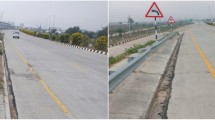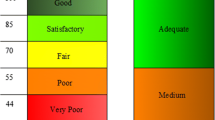Abstract
The capability to forecast future pavement condition has been questions of common interest for the economic reason for pavement management systems and the need to develop an intelligent prioritization schedule became ever more important for the sake of efficiency. If the pavement performance prediction model can be developed based on the past pavement performance data, the remaining service lives for pavements can be forecasted. It would help to optimize the scheduling of the rehabilitation activit ies and to determine the funding level required to achieve a predetermined level of performance. However, the results of the previous attempts to develop general pavement condition forecasting models have not been satisfied reliable because of the difficulties of collection pavement performance data, complexity of the pavement construction situation and different properties of pavement materials. The Georgia Department of Transportation (GDOT) has used the Pavement Condition Evaluation System (PACES) to evaluate the pavement conditions for the entire highway system in Georgia annually for the past 15 years. In this paper, the as phalt pavement performance prediction models for the state highways and the interstate highways have been developed applying simple and multiple regression analysis methods using the PACES data and PACES rating. The multiple linear regression model is effective to forecast pavement performance when ratings with various AADT. If this pavement performance prediction model using multiple linear regression analysis is implemented into the Pavement Management System, it could play an important role in the decision making process for the asphalt pavement management system.
Similar content being viewed by others
References
Allison, J.T., Garcia-Diaz, A., and Lytton, R.L. (1983). “A model for prediction flexible pavement service life and impact on rehabilitation decisions.”62 nd Annual Meeting of Transportation Research Board, Washington, D.C..
Garcia-Diaz A., Riggins, M., and Liu S.J. (1984).Development of Performance Equations and Survivor Curves for Flexible Pavement, Res. Rpt. 284-5. Texas Transportation Institute, Texas A&M University, College Station, TX.
Georgia Department of Transportation (1996)PACES-Pavement Condition Evaluation System.
Lou, Z., Lu, J.J., and Gunaratne M. (1989).Forecasting of Pavement Crack Performance Crack Performance with an Adaptive Filter Model, University of South Florida, FL.
Lytton, R.L., Scullion, T., Garrett, B.D., and Michalak, C.M. (1981)Effects of Truck Weights on Pavement Deterioration, Texas Transportation Institute, Final Report RF 4087-2.
Neter, Kutner, Nachtshem, and Wasserman (1999)Applied Linear Statistical Medels, 4th edition, IRWIN.
Santha, L. and Young, B. (1993).Development of Pavement Performance Prediction Models for Georgia Pavements, Georgia Department of Transportation.
Saraf C.L. and Majizzadeh K. (1992). “Distress prediction models for a network level PMS.”Transportation Research Record 1344, Transportation Research Board, Washington, D.C., pp 38–48.
Author information
Authors and Affiliations
Corresponding author
Rights and permissions
About this article
Cite this article
Kim, SH., Kim, N. Development of performance prediction models in flexible pavement using regression analysis method. KSCE J Civ Eng 10, 91–96 (2006). https://doi.org/10.1007/BF02823926
Received:
Accepted:
Issue Date:
DOI: https://doi.org/10.1007/BF02823926




